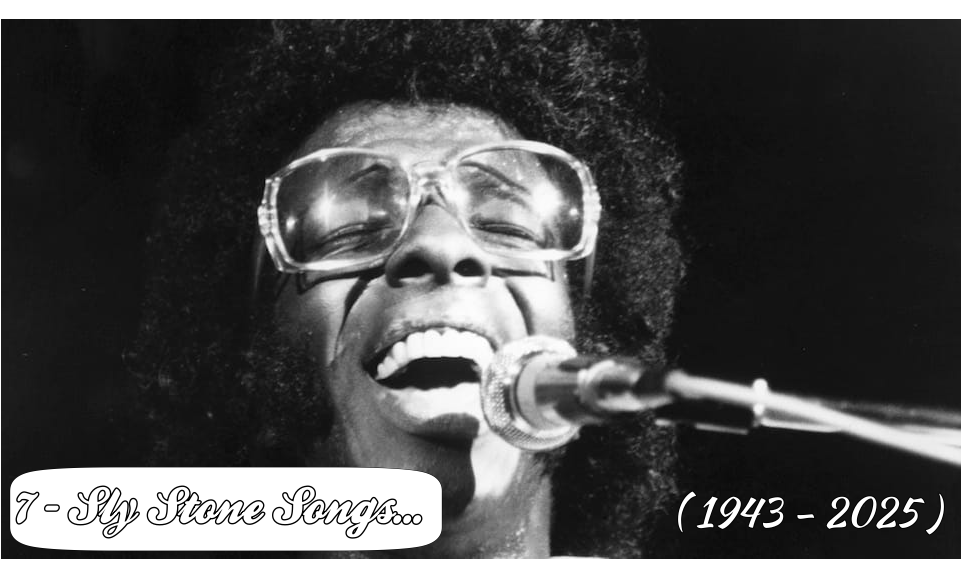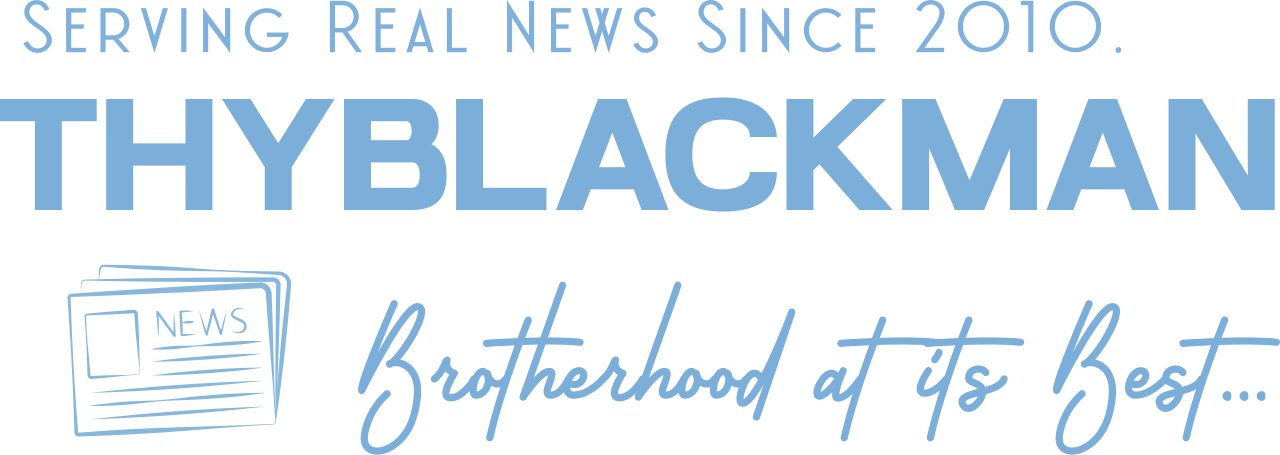(ThyBlackMan.com) The world has lost one of its greatest architects of sound. Sly Stone, the enigmatic genius behind Sly and the Family Stone, passed away on June 9 at the age of 82, leaving behind a sonic blueprint that continues to influence funk, soul, hip hop, and modern rock. While hits like “Everyday People,” “Dance to the Music,” and “Family Affair” are etched into music history, it’s the lesser-known corners of Sly’s catalog that reveal the full scope of his revolutionary artistry. These are the songs that didn’t make it to every retrospective—but should have.
Here are seven lesser-known Sly Stone gems that every music lover should take time to rediscover. Whether you’re a lifelong fan or new to his music, these tracks offer a deeper look into the mind of a man who changed music—forever.

1. “In Time”
“In Time” might be one of the funkiest, most forward-thinking tracks Sly ever recorded—and yet it remains criminally underrated. Nestled in Fresh, one of the band’s most musically daring and stripped-down albums, “In Time” opens with a rubbery bassline from Larry Graham and quickly unravels into a taut, minimal groove. It’s stripped-down but explosive, almost like the blueprint for what Prince, D’Angelo, and even J Dilla would later explore.
What makes “In Time” so revolutionary is how it sidesteps traditional funk expectations. This isn’t a song that crescendos—it hypnotizes. Every instrument is deliberately restrained. The drums don’t hit—they sway. The bass doesn’t pop—it melts. Sly’s vocals are barely there, slurred and conversational, yet they anchor the track like an incantation. He doesn’t plead or shout—he murmurs, almost daring the listener to lean in. “There are things that I don’t like,” he says, casually cool, but the weight behind those words feels like a generational reckoning.
Musically, “In Time” becomes a cornerstone for future genre evolution. You can hear its DNA in neo-soul, lo-fi hip hop, and the broken-beat experiments of artists like Flying Lotus and Thundercat. The off-kilter drum patterns? The lack of traditional melody? Sly was years—if not decades—ahead of the curve. He was deconstructing funk just as the rest of the world was still trying to define it.
This track remains a favorite for crate diggers and sample hunters for good reason. It’s timeless in its minimalism. “In Time” sounds like it could’ve been recorded yesterday or tomorrow. It doesn’t follow trends—it set them. The song isn’t content to sit in the background. It lingers. It stalks you. It breathes. For music nerds and casual listeners alike, this is where genius lives.
2. “Just Like a Baby”
As There’s a Riot Goin’ On moves into its hazy middle section, “Just Like a Baby” drifts in like a fevered lullaby—a sleepy lament coated in narcotic warmth. This is Sly at his most intimate and fractured. There are no sharp hooks, no choruses meant for singalongs. Instead, it’s an invitation into emotional murk, a song that captures vulnerability in a way few funk or soul artists dared to express at the time.
The track begins with lo-fi crackle and hiss, the kind of analog grime modern producers now try to replicate. It’s all here by accident—or perhaps intention. You hear the physicality of tape—the hiss, the saturation, the imperfections that make this sound human. A lazy guitar chord drifts alongside soft drums and Sly’s weary voice. He sounds not like a man performing, but one confessing. “I’m just like a baby,” he sings. “Just like a baby, hey, I can feel it when you lie to me”
What’s remarkable is how modern this track still feels. Its emotional openness mirrors the heart-on-sleeve honesty found in today’s lo-fi bedroom pop or stripped-back R&B. Artists like Frank Ocean, SZA, and even Tyler, The Creator use similar palettes: sparse production, whispered vocals, and raw emotion. “Just Like a Baby” predicted that entire wave, decades before the culture caught up.
The song also reveals how Sly’s genius wasn’t always tied to spectacle. Here, restraint is the artistry. It’s in the pauses, the hesitations, the space between notes. “Just Like a Baby” is fragile. It teeters. And that fragility is the point—it reflects how human beings often feel when asking to be loved without conditions.
It’s a song for late nights, for reflection, for those moments when silence feels too loud and all you can do is sit with your feelings. Quietly revolutionary.
3. “Thank You for Talkin’ to Me, Africa”
“Thank You for Talkin’ to Me, Africa” is the ghostly echo of a once-celebratory anthem. Originally introduced to the world as the exuberant “Thank You (Falettinme Be Mice Elf Agin),” this version—recorded two years later—is drained of joy and pumped full of dread. What was once funky and proud becomes slow, distorted, and shell-shocked. This is funk post-apocalypse.
From the first few bars, you know something is wrong—and intentionally so. The bass loops in slow motion, muddy and relentless, like a march through tar. The guitar licks are warped, as if drowning in reverb. Sly’s voice is stretched and druggy, dragging syllables like chains. It’s as if he’s singing from the other side of a dream—or a nightmare.
The title itself is a statement. In a period where Black consciousness was growing and the Afrocentric movement was on the rise, naming the song “Thank You for Talkin’ to Me, Africa” was both a homage and a plea. It suggests disconnection from his roots, a desire for healing, and a recognition of ancestral grounding in a time of personal and societal chaos.
Lyrically, the track barely moves. The phrases repeat like mantras. “Thank you for letting me be myself again” transforms from celebration to requiem. He was himself. Now, he’s lost in the fog of war—internal and external. The civil rights dream had frayed. The utopian unity of the ’60s had curdled. And this song documents that collapse like few others.
Modern listeners will find this track emotionally draining, but also cathartic. It’s one of those songs you don’t casually play—it plays you. It resonates with anyone who has lived through burnout, betrayal, or a crisis of faith in their own identity. In 2025, it sounds like a raw truth amid a world of performative optimism. It’s the blues—filtered through the broken lens of psychedelic soul.
4. “Let Me Have It All”
“Let Me Have It All” is one of the rawest, most emotionally combustible songs in Sly’s catalog. While the Fresh album offers funk in its most distilled form, this track injects a fevered urgency into the mix. There’s no filter here—just yearning, laid bare. It feels like the musical equivalent of someone grabbing your collar and saying, don’t walk away just yet.
The track opens with a loose yet funky drum beat, unpolished in the best way. The groove wobbles slightly, intentionally off-kilter. It mirrors the emotional instability Sly was channeling at the time. A soulful Rhodes piano underpins the whole thing, trembling under his raspy vocal delivery. And his vocals—raw, strained, imperfect—make this one of the most human performances in his catalog.
Lyrically, it’s a desperate plea: “Let me have it all.” But it’s not just about physical possession—it’s about spiritual fulfillment. It’s about needing every piece of love, validation, hope, and purpose. The song doesn’t hide its desperation. In fact, it turns it into a strength. The line between romantic craving and existential cry becomes beautifully blurred.
What elevates “Let Me Have It All” is its ability to reflect emotional duality. On one hand, it’s deeply insecure—on the verge of collapse. On the other, it’s confident enough to demand what it wants. That tension is the song’s lifeblood. It’s what makes it feel alive in your headphones, even today. You can hear echoes of this tone in artists like Anderson .Paak and Bilal—singers who know how to balance fragility with swagger.
Whether you’re in a state of emotional limbo or creatively blocked, this song gets it. It doesn’t offer answers. It offers permission to feel. In that way, “Let Me Have It All” is timeless. It doesn’t belong to one decade or genre. It belongs to the heart.
5. “Running Away”
Clocking in under three minutes, “Running Away” is deceptively light. At first, it feels playful—almost like a skipping rhyme set to funk. A breezy tempo, cheerful rhythm guitar, and sing-songy vocal lines trick the ear into thinking this is a throwaway tune. But beneath the bright surface lies one of the most cutting, emotionally complex tracks Sly ever recorded. It’s a bitter laugh dressed up in a sunny melody.
The brilliance of “Running Away” is in its paradox. The delivery is so casual, so upbeat, that it takes a few listens to realize how biting the lyrics actually are. “Running away to get away / Ha! You’re wearing out your shoes,” he sings with mock amusement. It’s a taunt, but not without empathy. He’s calling out avoidance behavior—whether it’s dodging hard conversations, responsibility, or one’s inner truth. Yet he couches the critique in such an infectious groove that you almost miss the warning entirely.
The instrumentation underscores this duality. The bongo-like percussion, melodic bassline, and soft falsetto harmonies are hypnotic and soothing. But listen closely and you’ll detect a tension in Sly’s voice, a weariness that betrays his own sense of burnout and frustration. This is a song about the emotional exhaustion of watching people flee from themselves—and maybe about Sly fleeing from himself, too.
In today’s climate, with more conversations around avoidance, therapy, and emotional labor, “Running Away” feels shockingly modern. It captures how many people hide behind productivity, entertainment, or relationships instead of confronting their deeper issues. It’s like a funky TED Talk on escapism before we had the vocabulary to describe it.
This is one of those songs that rewards repeated listening. It gets catchier the more you hear it, but also more unsettling. It’s sly, smart, and dripping with truth.
6. “I Get High on You”
“I Get High on You” is a radiant declaration of joy and connection, and one of Sly Stone’s most underrated moments of self-renewal. Coming off the dissolution of the Family Stone and mounting personal struggles, Sly could’ve retreated. Instead, he returned with this euphoric, synth-laced jam that pulses with optimism and renewed creative energy.
From the opening synth stabs and bubbling bassline, the song immediately announces itself as a different Sly—one leaning into the future. The groove is tight, layered with a fusion of electronic elements and classic funk instrumentation. Horns blare like a sunrise, and the rhythm section drives the track forward with purpose. Yet what gives it wings is Sly’s vocal performance: loose, lively, and full of gratitude. His voice practically smiles through the speakers.
Lyrically, the message is clear but profound. “I get high on you,” he sings—not as a metaphor for substance abuse, but as a literal declaration of love. In an era riddled with drugs and disillusionment, Sly flips the narrative, suggesting that human connection, not narcotics, is the real source of transcendence. In doing so, he stakes out a rare space in funk history: one that praises sobriety, clarity, and natural highs without sacrificing groove or grit.
It’s worth noting how ahead of its time the production is. The use of synthesizers in a funk context would go on to define much of the Minneapolis sound later explored by Prince and The Time. “I Get High on You” bridges the organic and the futuristic, and it does so effortlessly.
Today, this song feels like a celebration of choosing light—choosing life—even when darkness is easier. It’s a mood elevator, a dancefloor refresher, and a soul cleanser all in one. Whether you’re throwing a backyard party, working out, or just walking with headphones on, this song lifts you. It reminds you that people, not products, are our most powerful stimulants.
7. “If You Want Me to Stay”
“If You Want Me to Stay” may be one of Sly’s more visible classics, but it still doesn’t receive the deeper acclaim it deserves as a psychological, musical, and emotional masterpiece. This is not just a funky breakup song—it’s a blueprint for emotional boundaries, coded in one of the most seductive basslines of all time.
Let’s talk about that bassline. Woven with a slippery groove that dances around the beat, it’s one of the most studied bass parts in funk history. Bootsy Collins has praised it. Flea from Red Hot Chili Peppers mimicked it. D’Angelo channeled its rhythm on Voodoo. It’s deceptively simple and maddeningly addictive—like a spiral that never quite touches the center.
The lyrics, meanwhile, are all about clarity. Sly isn’t lashing out, nor is he begging. Instead, he’s stating the emotional terms of engagement. “If you want me to stay / I’ll be around today / To be available for you to see.” That’s not manipulation—it’s honesty. He’s saying: Here’s what I need to be present in your life. Can you handle it? In today’s language, we’d call this radical transparency. Sly was delivering it decades before anyone had a term for it.
His vocal performance is a study in balance. He’s cool, controlled, and conversational. There’s no screaming or pleading. Yet every word hits. It’s the sound of someone reclaiming their peace, while still extending love. That makes it a rare breed in music—especially in a genre where heartbreak often turns into revenge or regret.
This song works on multiple levels. It’s a dance track. It’s a slow jam. It’s a soul mantra. It’s also an anthem for anyone learning to articulate their worth in a world that often asks us to shrink. Whether you’re going through a breakup, setting boundaries with family, or just reminding yourself that you matter—this song is a groove-laden guide.
In 2025, as we redefine what love, respect, and presence mean in our lives, “If You Want Me to Stay” feels more relevant than ever. It’s emotional intelligence wrapped in pure funk.
Sly Stone was more than a hitmaker—he was a prophet of rhythm, a master of contradiction, and a pioneer of what music could be when it ignored the rules. These seven songs prove that even beyond his chart-toppers, Sly was operating on a level most musicians could only dream of.
His passing marks the end of an era—but his deeper cuts prove that the soul of his work still lives on in every drum loop, every synth haze, every bass groove we hear today. Let these lesser-known songs be your invitation to go deeper. Sly didn’t just create music. He created a world. And there’s still so much of it to explore.
Staff Writer; Jamar Jackson
















Leave a Reply